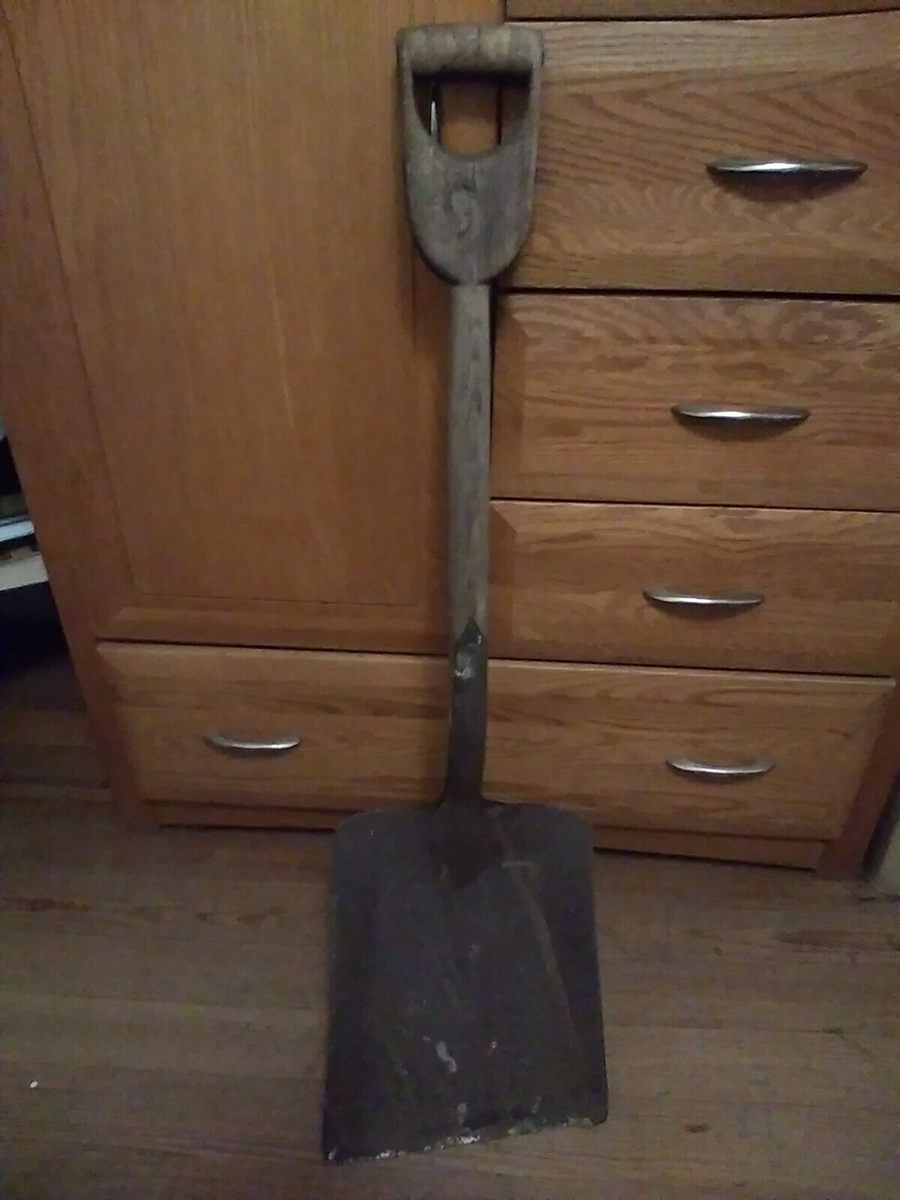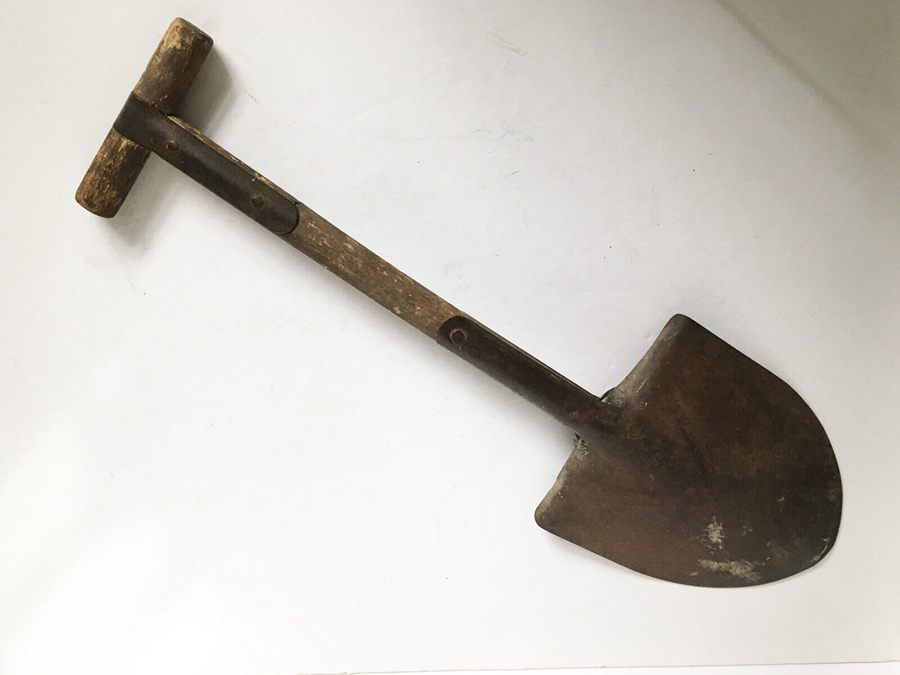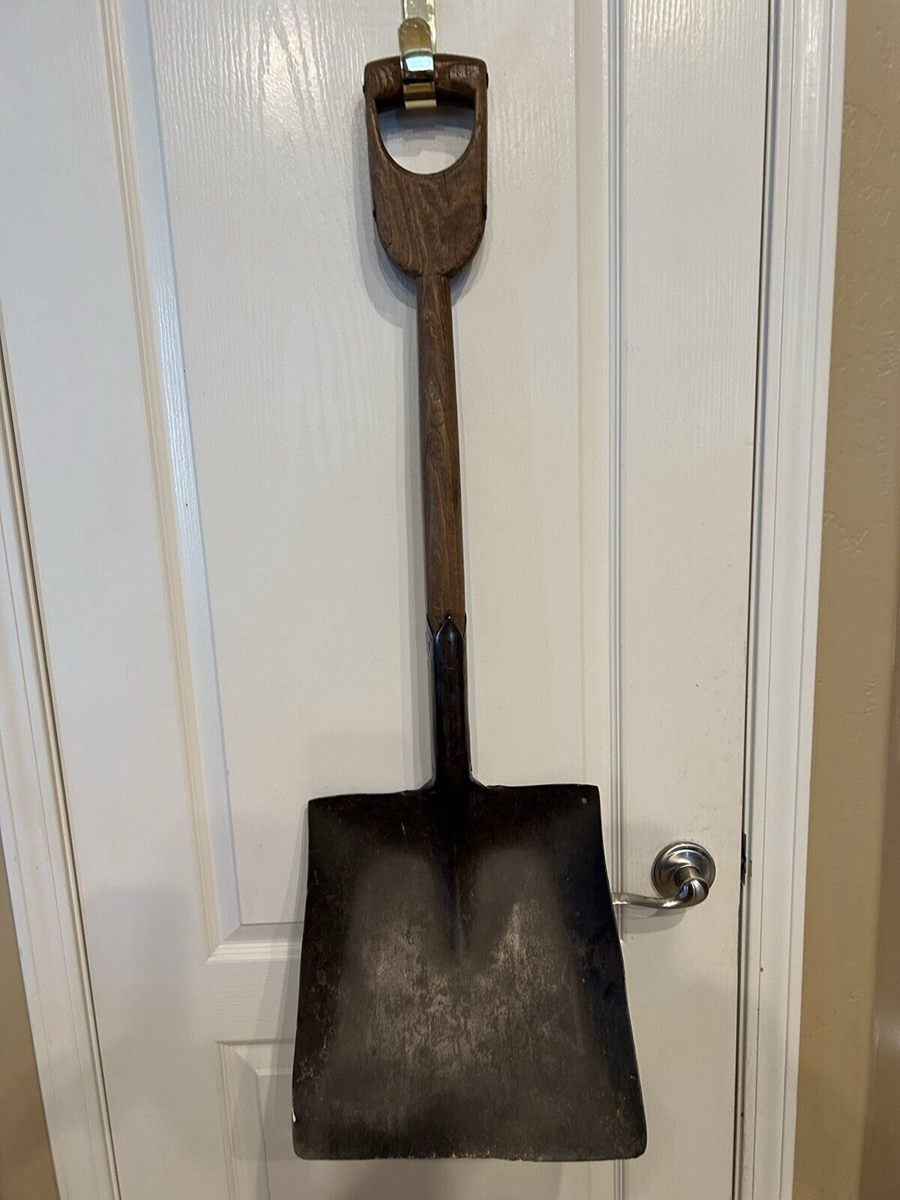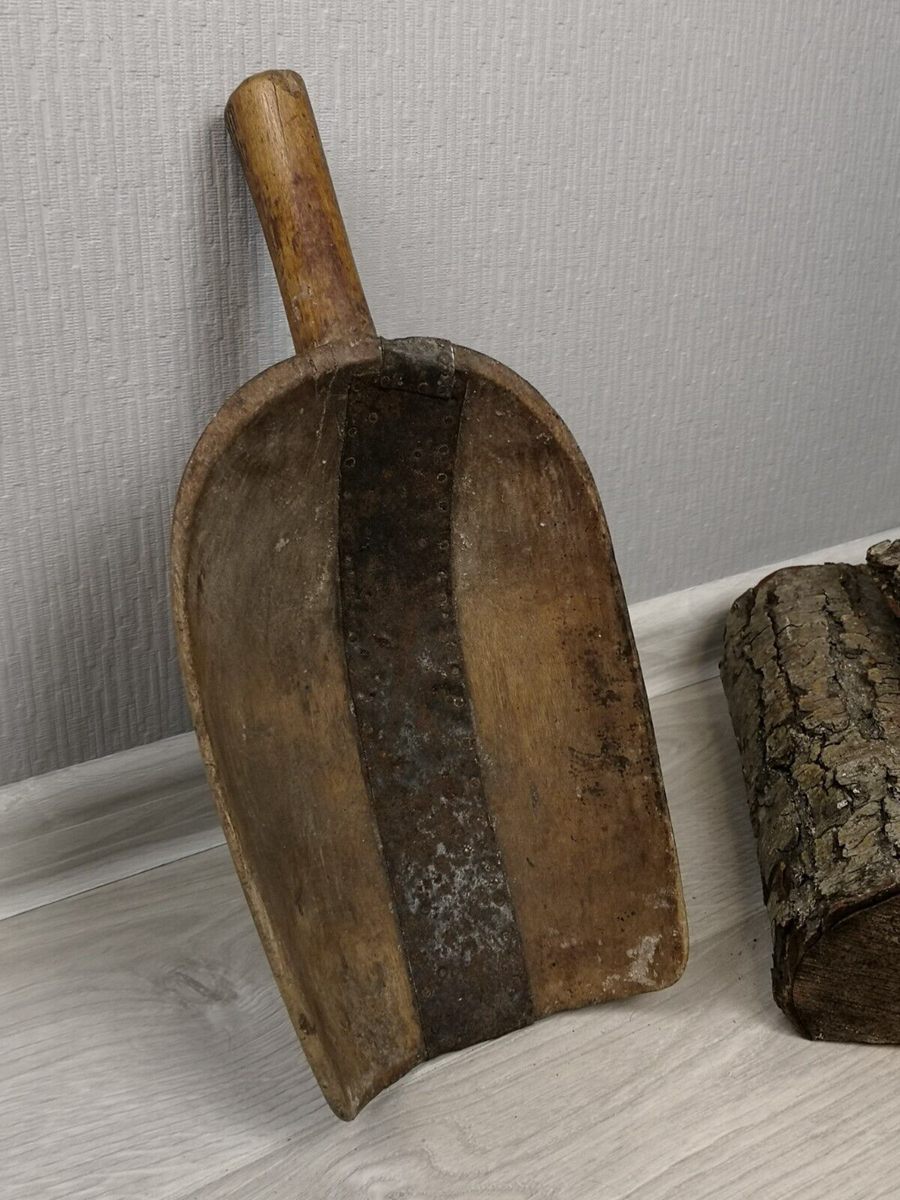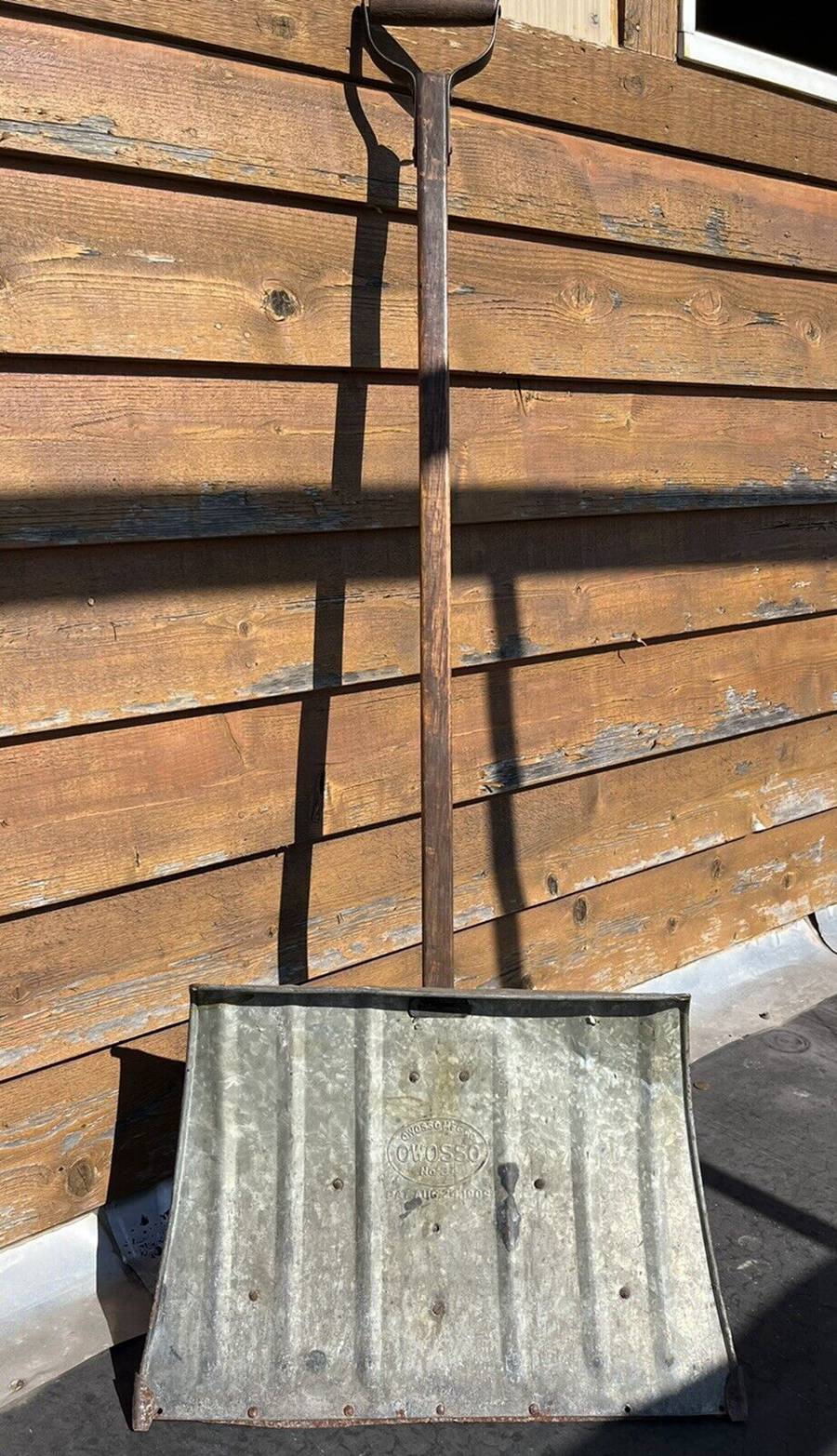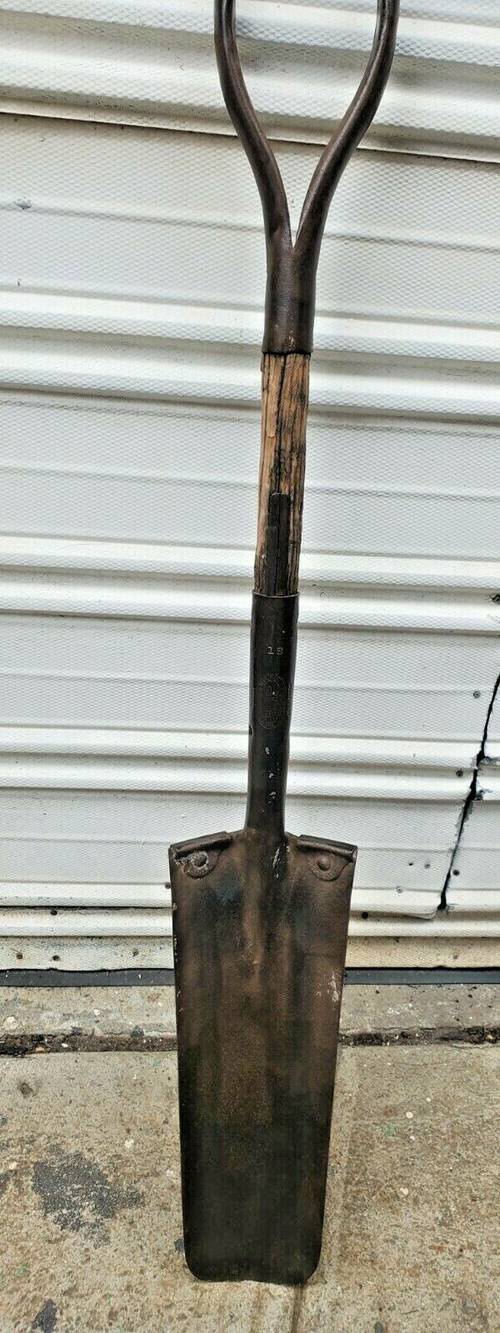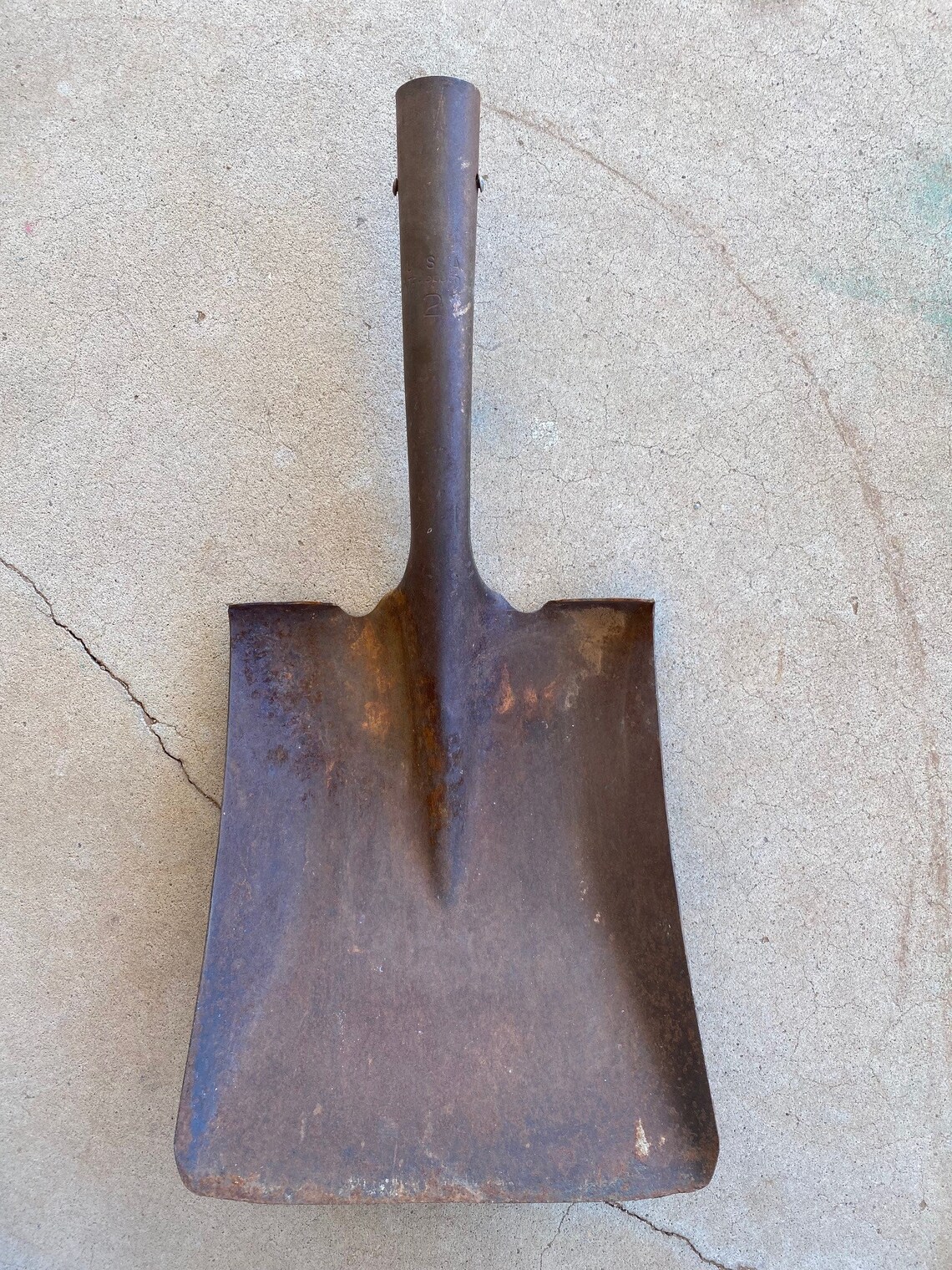Antique shovels hold a special place in the world of collectibles, offering unique insights into the history of human labor and craftsmanship. As you delve into the fascinating world of antique shovel identification and valuation, it’s important to familiarize yourself with the key features that distinguish genuine antique pieces from their modern counterparts.
One way to identify antique shovels is by examining their construction materials, such as the presence of flexible steel blades and minimal designs. These characteristics often suggest that the shovel originates from the early 1900s, when long, pointed, and Y-shaped designs were popular. Keep in mind that such shovels are typically lightweight and usually valued at no more than $50, even if they belong to reputable brands. Additionally, patent numbers imprinted on the shovel can provide valuable information to help you determine its age.
As you refine your antique shovel identification skills, be sure to investigate other aspects of the shovel’s construction, such as hand-carved or hand-finished surfaces. By mastering these key identification techniques, you’ll be well on your way to uncovering the fascinating stories hidden within these historical tools and understanding their true value in today’s antique market.
Table of Contents
The History & Evolution of Antique Shovels
Shovels have been an essential tool throughout human history, aiding you in tasks like farming, construction, and excavation. While modern shovels may look different from their antique counterparts, understanding the history and evolution of antique shovels can help you appreciate their value and craftsmanship.
In ancient civilizations, shovels were made of materials like wood, stone, and animal bones. As metalworking techniques improved, shovels began to feature metal components, making them more durable and efficient. Over time, various types of shovels were developed to suit specific tasks:
- Trowels: The earliest known shovels were actually small handheld tools called trowels, used for digging and scraping. These tools were often made from flint, bone, or wood.
- Spades: When you think of a shovel, you likely envision a spade with a flat, rectangular blade. Spades were used for tasks requiring precision and control, such as turning soil in gardens or creating trenches.
- Scoops: These shovels were designed for moving loose materials like coal, grain, and sand. With a wide, curved blade, scoops allowed you to effectively gather and transfer materials.
By studying antique shovels, you can identify various features that indicate their age, origin, and potential value. Keep an eye out for these aspects:
- Material: The materials used to construct a shovel can provide insight into its age and possible uses. For instance, wooden or bone shovels are likely very old, while metal shovels indicate a more recent time period.
- Craftsmanship: Details about the construction and quality of the shovel, like the joinery, welds, or engravings, can help you determine its origin and value. Skilled artisans often signed their work, so pay attention to any markings.
- Handle: The length and shape of the handle can offer clues about the shovel’s intended use. Longer handles were better for heavy labor, whereas shorter handles allowed for more control in smaller spaces.
- Wear & Patina: The level of wear on a shovel, as well as any patina that has developed, can also reveal valuable information about its age and history. A lack of wear could mean the piece was a decorative item, while extensive wear might point towards frequent use in its time.
By understanding the history and evolution of antique shovels, you’ll be better equipped to determine their potential value and appreciate their unique features. Take the time to study various examples and refine your ability to identify valuable pieces.
How to tell if Shovel is Antique or Old
When trying to identify whether a shovel is an antique or just old, you should first look for any etched logos, rail marks, or patents on its handles. These markings can help you trace the age and brand of the shovel. Some antique shovels may have one-piece, wood, brass, bronze, or iron blades, which are worth considering for good returns. Additionally, stamped railroad, military, and mining shovels often hold higher valuations.
Examine the construction materials of the shovel as well. Worn wood, cast iron, and even glass can be indicative of an antique tool, while stainless steel and plastic materials usually signify a tool from the 20th century.
Pay attention to the construction methods used for the shovel. If it shows signs of hand carving or hand-finished surfaces, it might be quite old. Another method to determine the age of a shovel is by researching the history of the company that made it. This can give you a general idea of when the shovel was produced. Moreover, check for wear and tear on the shovel, as it can be a useful indicator of the item’s age.
In summary, to tell if a shovel is antique or old:
- Look for etched logos, rail marks, or patents on handles
- Check the blade material (wood, brass, bronze, or iron)
- Seek out stamps indicating railroad, military, or mining use
- Examine the construction materials (worn wood or cast iron for antiques)
- Look for signs of hand carving or hand-finished surfaces
- Research the history of the manufacturing company
- Observe wear and tear patterns on the shovel
Keep these points in mind when assessing your shovel, and you’re more likely to accurately identify whether it’s an antique or just old.
7 Popular Types of Antique Shovels and Their Values
D-Handled Shovel
A D-handled shovel features a D-shaped grip on the top of the handle, allowing for easier handling and balance. These antique shovels are often made of wood, with a metal blade. Value depends on factors like age, manufacturer, and condition, but you are likely to find them priced around $40-$60.
Trenching Shovel
Trenching shovels have long, narrow blades designed for digging trenches or channels. Many antique versions feature a T-handle for added leverage. Pay attention to those with a one-piece wood or metal blade, as they tend to be more valuable. You may find antique trenching shovels priced between $50-$100+.
Coal Shovel
A coal shovel typically has a square-shaped, flat blade with a short handle, ideal for scooping and transferring coal. In the antique market, coal shovels with a wooden D-handle tend to hold more value. These shovels may range in price from $30-$50.
Grain Shovel
Grain shovels, used for agricultural purposes, often boast a large, scoop-shaped blade. Antique grain shovels made of brass or bronze are particularly sought after. Prices can vary, with larger brass or bronze shovels fetching upwards of $100.
Snow Shovel
Antique snow shovels are characterized by their wide blades to move snow more efficiently. They often feature unique designs and may have wooden handles. Their value can vary, with rarer models fetching higher prices ranging between $50-$150+.
Spade Shovel
Spade shovels, with their flat, rectangular blades, were designed for cutting through roots, sod, and clay. Antique spade shovels with wood, brass, or bronze blades can hold significant value. Prices may range from $40-$80, depending on factors like age and quality.
Square-Point Shovel
Square-point shovels are versatile tools with flat, wide blades perfect for tasks like moving sand or loose gravel. Antique square-point shovels with wood, brass, or bronze materials often hold higher value than their modern counterparts. Prices for these antiques may range from $30-$70.
Remember to check for etched logos, rail marks, and patents on the handles of these antique shovels, as they can provide crucial information for identification and valuation.
6 Factors to Identify & Value Antique Shovels
1. Age
When identifying antique shovels and their value, it’s important to consider the age of the tool as one of the critical factors. Age can impact the appraisal and value of antique shovels, with older pieces typically being more valuable than their younger counterparts.
To determine the age of a shovel, you should examine it carefully for signs of wear, rust, and any stamps or markings that could help you identify its origin. Researching the company that made the shovel can provide further information on its age, as many shovel manufacturers have specific markings corresponding to the era they were active.
Here is a valuation table based on the age of antique shovels:
| Age of Shovel | Average Valuation |
|---|---|
| Pre-1800s | $500 – 600 |
| 1800s | $400 – 500 |
| Early 1900s | $300 – 350 |
| Mid-1900s | $200 – 250 |
| Late 1900s | $100 – 150 |
Keep in mind that these values are approximate and may vary depending on other factors, such as the condition of the shovel, the rarity of the design, and the demand among collectors.
To summarize, age plays a significant role in the appraisal and valuation of antique shovels. Older shovels are generally more valuable, and understanding the various methods to properly identify the age of the tool is crucial for collectors. Be sure to use this valuation table and conduct thorough research on the shovel’s history to ensure an accurate assessment of its age and value.
2. Brands
When it comes to antique shovels, the brand can play a crucial role in their identification and value. Some well-known brands have a rich history, and their products are sought after by collectors and enthusiasts. In this section, we will discuss the impact of different brands on the value and appraisal of antique shovels.
Here are some notable brands that have produced antique shovels and their average valuations:
| Brand | Average Valuation |
|---|---|
| Ames | $100 – 130 |
| True Temper | $120 – 150 |
| Millers Falls | $130 – 160 |
| Sheffield | $140 – 170 |
| Stanley | $150 – 180 |
Ames is a well-known brand that has been producing shovels since the 1700s. Their antique shovels are known for their hand-forged craftsmanship and attention to detail. These factors make Ames shovels highly collectible and valued by enthusiasts.
True Temper, on the other hand, has a strong history of producing durable, high-quality shovels for various industries. The brand’s antique shovels are known for being both functional and visually appealing, which adds to their value in the collector’s market.
Millers Falls and Sheffield are both famous for their quality construction and materials. The antique shovels by these brands are often sought after for their unique design features and intricate details, which can increase their value significantly.
Stanley, a renowned toolmaker, also produced antique shovels that are highly collectible. Known for their practical design, these shovels are often valued for their functionality as well as their aesthetic appeal.
It’s essential to keep in mind that prices for antique shovels can vary based on factors such as condition, rarity, and market demand. Brand reputations play a part in establishing these values, but each antique shovel should be individually assessed to determine its accurate worth.
3. Material
When identifying and valuing antique shovels, the material plays a significant role. Antique shovels can be made of various materials, including metal, brass, and iron. The type of material used in a shovel’s construction can help determine its age, rarity, and value. In this section, we will discuss the impact of different materials on the appraisal and valuation of antique shovels.
The table below lists some common materials found in antique shovels, along with their average valuations:
| Material | Average Valuation |
|---|---|
| Metal (unspecified) | $100 – $150 |
| Brass | $150 – $250 |
| Iron | $200 – $350 |
As you can see, iron shovels generally command a higher value than their metals and brass counterparts, mainly due to their durability and historical significance.
Keep in mind that the condition and patina of the material can also affect the shovel’s value. For example, a well-preserved iron shovel with a desirable patina might fetch a higher price than one with significant wear and rust.
In addition to the material itself, the shovel’s construction methods and design elements can impact its value. For instance, a shovel with intricate details or unique features may be more valuable than a simpler one, even if they are made of the same material. Always pay close attention to the design and quality of craftsmanship when appraising antique shovels.
Remember, the material is just one factor influencing an antique shovel’s worth. Knowledge of the specific periods and makers, as well as the rarity of the piece, can also play a significant role in determining its value. However, by carefully considering the material and other factors mentioned above, you can make an informed decision when appraising and collecting antique shovels.
4. Size
When identifying and valuing antique shovels, the size of the shovel can play a significant role in its worth. Larger shovels might have been used for more labor-intensive tasks, while smaller ones could have been utilized for more delicate work. Collectors find value in varying sizes due to their differing applications and historical significance.
The size of an antique shovel can be measured in length, width, and depth. Typically, the length of the shovel extends from the tip of the handle to the bottom of the blade. The width and depth refer to the dimensions of the blade itself. Consider the following table for average valuations based on shovel size:
| Shovel Size | Average Valuation |
|---|---|
| Large Shovel (Length > 40 inches) | $400 – 500 |
| Medium Shovel (Length between 30 and 40 inches) | $250 – 350 |
| Small Shovel (Length < 30 inches) | $150 – 250 |
| Wide Blade (Width > 12 inches) | $300 – 400 |
| Narrow Blade (Width < 12 inches) | $200 – 300 |
Keep in mind that these valuations are just estimates, and the actual value of an antique shovel depends on various factors, such as its condition, rarity, and historical provenance. It is essential to consult with an expert appraiser or conduct thorough research to determine the precise value of your antique shovel based on its size and other factors.
5. Patterns
When identifying and valuing antique shovels, the patterns on the shovel can play a significant role. Some shovels have carvings or unique patterns that can help identify the brand or era of manufacturing. These patterns can also provide insight into the shovel’s intended use, as certain designs were more prevalent during specific time periods or were exclusive to certain brands.
To determine the value based on patterns, consider these factors:
- Uniqueness: Some patterns are rarer than others. If you come across a shovel with an exceptional pattern, it may carry a higher value.
- Craftsmanship: The intricacy and quality of the carvings can often impact the value. Superior craftsmanship can attract collectors and drive up the price.
- Condition: The condition of the carving is crucial when determining the value. A shovel with a well-preserved pattern will be more desirable than one with significant wear or damage.
- Brand or Manufacturer: Some vintage shovel brands are well-known for their signature patterns. If you can identify a specific brand based on the pattern, it may influence the price.
Based on these factors, here is an example valuation table for the patterns affecting an antique shovel’s value:
| Antique Shovel’s Pattern | Average Valuation |
|---|---|
| Simple Floral | $100 – 120 |
| Geometric | $80 – 100 |
| Intricate Foliage | $150 – 200 |
| Brand-Specific Emblem | $100 – 150 |
| Unique Image/Design | $175 – 225 |
| No Pattern or Carvings | $40 – 60 |
Keep in mind that these valuations are approximate, as market conditions, regional differences, and the overall rarity of the pattern can greatly influence the price. Evaluating the pattern on your antique shovel will give you a better understanding of its value and history, but always consult experts or additional sources if you’re unsure about its authenticity or worth.
6. Shape
The shape of an antique shovel can significantly impact its value and appraisal. Different shapes and designs of shovels were produced for various purposes and time periods. As a result, understanding the different shapes of antique shovels can help you determine their value and origin.
There are several common shapes found in antique shovels, such as square point, round point, and D-shaped handle designs. Additionally, some antique shovels feature unique or decorative elements, which can also increase their value.
Here’s a valuation table highlighting some of the different antique shovel shapes and their average values:
| Antique Shovel’s Shape | Average Valuation |
|---|---|
| Square Point | $100 – $150 |
| Round Point | $120 – $170 |
| D-Shaped Handle | $80 – $120 |
| Ornate or Decorative Design | $200 – $300 |
| Unusual or Rare Shape | $300 – $500 |
It’s important to note that these values are not set in stone and can vary depending on the specifics of each antique shovel, such as its condition or the materials used.
To identify the shape of your antique shovel, closely examine the blade and handle. Look for any distinctive features or markings that could hint at its origin or purpose. Furthermore, research similar shovels to better understand how the shape may influence the value.
In conclusion, understanding the relationship between the shape of antique shovels and their value can help you appraise your collection more accurately. Keep in mind that a rare or unique shape may command a higher price, while more common shapes may be valued lower.
Final Thoughts
Now that you’re familiar with antique shovels and their identification process, it’s essential to keep some critical points in mind as you assess and value these items:
- Pay attention to the shovel’s age, and look for patent numbers or any manufacturer’s marks on it. Research the history of the company that made the shovel, as this can give you an idea of when it was produced.
- Examine the shovel’s shape and blade material, ensuring that it is made of a durable material like steel or aluminum. Blade quality can significantly impact its value.
- Take note of the construction technique and any unique patterns or carvings on the shovel, as these features can add to its worth.
Additionally, remember that proper care is vital for maintaining the value of your antique shovels. Here are some essential tips:
- Always use an appropriate oil to lubricate these tools, as it helps keep them in good operational condition.
- To save your antique shovel from rusting, ensure that you store it in a dry environment and occasionally apply a rust preventative.
By keeping these factors in mind and utilizing the information gathered from reliable resources, you’ll be well on your way to understanding and appreciating the world of antique shovels.
FAQ
How can I determine the age of my antique shovel?
To estimate the age of your antique shovel, check for patent numbers, which can often be found on the handle or blade. Research these patent numbers to find out when the shovel was made. Additionally, analyze the overall shape and design, as this can offer some clues about its age.
What materials were used in antique shovel blades?
Antique shovels were typically made with different materials depending on their age and intended use. Common materials include:
- Wrought iron: Often used in older, hand-forged shovels.
- Cast iron: Seen in the mid-1800s to early 1900s, heavier and more brittle than wrought iron.
- Steel: Introduced in the late 1800s, steel blades were lighter and stronger than their iron counterparts.
What are some popular vintage shovel brands?
Some well-known vintage shovel brands are:
- Ames
- True Temper
- Stanley
- Union
How do I maintain my antique shovel?
To properly maintain your antique shovel, follow these tips:
- Clean: Remove dirt and debris from the blade and handle using a brush and mild soapy water.
- Lubricate: Apply a thin layer of oil, such as mineral oil or 3-in-1 oil, to the blade and any moving parts to prevent rusting and maintain ease of use.
- Store: Keep your shovel in a cool, dry place, away from moisture to prevent rust.
How do I determine the value of my antique shovel?
The value of an antique shovel depends on factors such as age, rarity, condition, and historical significance. Some examples of shovel values include:
- A very old and rare scoop shovel could be worth several thousand dollars.
- A less old and rare scoop shovel might sell for a few hundred dollars.
- A common metal blade shovel from the early 1900s might be valued at around $50.
To accurately appraise your shovel, consult an expert in antique tools or research similar items sold at auctions to get an idea of market value.


